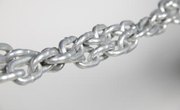Personal opinion writing is something that you’ve been doing since you started writing in elementary school. Who knows your opinion better than you? You may think writing a personal response essay will be pretty easy, but in reality, writing a personal response paper requires a great deal of critical thinking and introspection.
What Is a Personal Response Essay?
A personal response essay is a type of essay that asks students to think critically about a piece of writing (or sometimes another form of media like a movie, television show or article) and respond based on a critical analysis of the writing’s content in comparison to their own beliefs and personal experiences. A personal response essay is not a blow-off, fluff assignment. On the contrary, it asks students to dig deep and justify their personal beliefs and feelings in terms of concrete description, logic, philosophy and reasoning.
An excellent personal essay won't only make clear the writer’s personal beliefs, it will also justify their feelings about a piece of writing or other media by using analysis of direct quotations and examples from the response text. Because personal response essays require so much critical thinking and analysis, a well-prepared student will come at the essay as they would any research paper. Preparation, close reading, outlining and revision are all key steps to writing a well-rounded response.
Do a Pre-Reading Brainstorm
Even before you begin reading, you can start thinking critically about the text. Take out a piece of paper and jot down your preconceived notions before you get started. For example, you may have heard of the text before. It could be a short story that was made into movie or maybe your best friend read it last semester and told you all about it. If you’re feeling particularly organized, you can use the type of notes called KWL. These letters stand for what you Know, what you Want to know and what you will Learn after you read the text. If you’ve already heard about the text before you started to read it, make a list of things you already think you know. You might not be right on every idea, but the beauty of KWL notes is that you don’t have to go back and erase what you got wrong just to make room for new ideas. Being able to compare your preconceived notions with what you’ve learned will help you form a more thorough response in your paper.
If you haven’t heard of the text before, do a pre-reading exercise. Start with the title and write about what you think it means. Some essays have strange titles, like David Foster Wallace’s “Consider the Lobster.” If your professor assigned something with an interesting title like that, you’ll have plenty to write about. If the title is more staid, you can still use it to make predictions. Ask yourself, just by reading the title, what do I think this text will be about?
After interrogating the title, glance over the rest of the story. Is there anything about the text that stands out to you, such as italics, bold words or subheadings? Consider them like you did the title. What do you think the story will include based on these characteristics of the text?
Read the Response Text
Now that you’ve finished brainstorming, read the text carefully. Don’t worry about annotation or taking notes just yet. Focus on reading for comprehension. But if you see something you don’t want to forget, like a paragraph that gives you a strong feeling or a particularly witty turn of phrase, underline it and make a note in the margin. You can circle back to these notes while you're doing a complete annotation.
Even though you’re going to read this text again, it's important to write down your first impressions. Your thoughts may change after careful analysis, but that doesn’t mean your initial ideas aren't valid. Indeed, one effective way to write a personal response essay is to delineate the changes in your thoughts about a single subject over time. For example, if you know you're going to read an essay about refugees and your initial idea was that your country shouldn't be as lenient on immigration even for those seeking asylum, the first read of the response text might not change your mind. After a close reading, you might better understand the subject matter and implications, and so, if the text then changed your mind, that would make for a significant personal response. In other words, make sure that you write down your opinions at every stage of the reading, planning and writing process. Your thoughts are the main focus of a personal response essay, so be very careful that you record them all.
Reread and Annotate the Response Text
After you record your initial reaction, reread the text. Use highlighters to select parts of the text that you'd like to go back to or quote. Write your analysis in pen in the margins. Unlike with many English papers, your analysis won't focus on literary devices like symbolism unless those devices affect you profoundly or cause you to think. Since the focus is on your thoughts, you could home in on rhetoric, especially if particular rhetorical devices in the text are effective at changing your mind. For example, if you're reading an essay written by a refugee, you might find their first-person description of fleeing their country quite moving. Or, perhaps you'll be more swayed by their use of statistics and logic. Remember that the essay depends on what you think and feel. Find portions of the text that back up those thoughts and feelings.
Make an Outline
Effective annotation will make constructing your outline easier. Look back over your annotated text and select the portions that you'd like to include in your essay. Organize these thoughts into list-like notations that you'll later expand into paragraphs. Arrange them in sections that include their main idea, your thoughts on that idea and the evidence from the text that you’re commenting on. Look back at your pre-writes and your first impressions. Incorporate these ideas into the logical flow of your thoughts.
When you’re writing the actual paper, your life will be much easier if you write down the quotations verbatim in your outline. Put quotation marks around them and make note of the citation. That way, when you’re writing, you only need to look back at your outline and you won’t waste time continually going back to the text.
Remember to construct an outline that corresponds with the desired length of your paper. If you've been assigned a simple five-paragraph essay, create an outline with the introduction, three body paragraphs and a conclusion. This form, however, won't be helpful if you have to write a longer paper. In that case, organize your ideas into subheadings and expand those into paragraphs. In the planning stage, it's better to have more ideas than fewer. Plan more than you think you'll need. If you reach the required length while you’re writing and still have more ideas, determine if your paper will make sense without them. There's no need to overwrite if you've already expressed your ideas efficiently.
Write Your Response
If you’ve already done a thorough job outlining your paper, the step of actually writing it will be one of the least arduous parts of the whole process. Go through your outline and expand on your thoughts. The most challenging part of this will be linking your thoughts in a logical flow. A lot of writers struggle with this part. The key is to understand each paragraph as a separate idea. Which smaller idea could act as a stepping stone and bridge the gap between them? Compose a sentence or two about these ideas and include them at the end and beginning of the paragraphs to act as linking sentences.
While you’re writing, make sure you're answering your writing prompt. You may have been given instructions that asked for certain details other than just your opinions and beliefs based on the text. Make sure you include everything that your teacher has asked for.
Try to write well using the active voice and descriptive language as needed. Spelling, punctuation and grammar are also vital parts to pay attention to, but if you get nervous while you’re forming your first draft, don’t let shooting for perfection make you nervous. It’s better to get the first draft out and have it be full of mistakes than to write nothing. Do your best when writing this first draft. If you make mistakes, you can fix them later.
Editing and Revision
Even most brilliant writers need editors. You do, too. Don’t fall into the easy trap of submitting your first draft to your teacher. Instead, there are a few additional steps you need to take before you're done.
First, read your essay over. Does the logic flow? Do all of your ideas have complete elaboration? Put yourself in someone else’s shoes. Does what you've written make sense to someone who isn’t you? Using this kind of interrogation technique, fill in missing pieces of logic and elaboration in your essay. Don’t start proofreading before you do this. If you're adding a lot more content, you'll have to start the proofreading process over or else risk missing things.
After you've made all the additions you think you need, it's now time to proofread. If you know you struggle with a certain type of grammar, using commas for instance, pay extra attention to those details.
Once your essay is as complete as you can make it, ask a peer, parent or teacher to read it over and tell you how you might improve it. Make sure you choose someone who will give you a thoughtful critique, not someone who will tell you your essay is perfect. If you have time, ask more than one person to read and comment on your essay. The more differing opinions you can get on your writing, the more you'll be able to improve it.
Using the comments they've made, revise your paper. This could mean adding and elaborating. This could also mean polishing your grammar and syntax. Remember, you don’t have to change your work to suit everyone’s opinions. That's why it's important to get more than one person to read your essay. You're allowed to disagree.
Finally, before submitting your paper, make sure that it's formatted as required by your teacher. For longer papers, this means using a cover page. Most formatting requires that your name and the page number be on every page. Be sure to follow the guidelines, and if you need to, look on the internet for examples. This is a simple thing to lose points for, so be careful. If you’re still struggling, ask your teacher for a personal response example.
Related Articles
References
Writer Bio
Rebecca Renner is a teacher and freelance writer from Daytona Beach, Florida. Her byline has appeared in the Washington Post, New York Magazine, Glamour and elsewhere.











